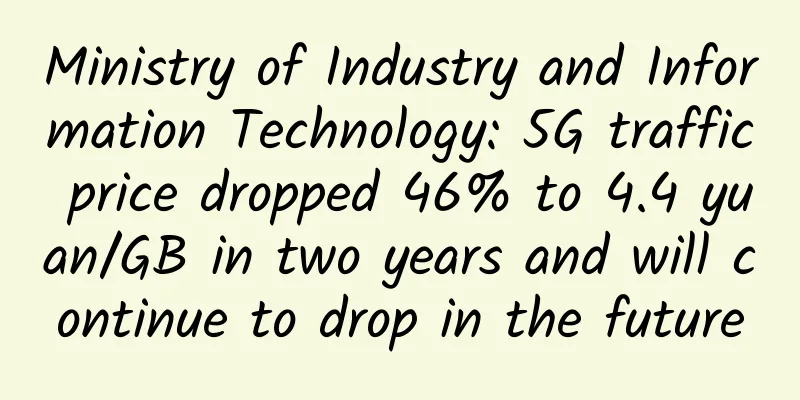The Ministry of Industry and Information Technology has launched a special campaign on IPv6. What should IDC, CDN and cloud service providers do?

|
On November 25 last year, the European RIPE NCC made the final /22 IPv4 allocation from the last remaining addresses in the available pool. Since then, the global IPv4 addresses have been officially exhausted and will transition to IPV6. Ipv6, the full name of Internet Protocol Version 6, is the next-generation IP protocol designed by IETF to replace IPV4. In my country, the promotion of large-scale deployment of IPv6 has entered its fourth year. On March 23, the Ministry of Industry and Information Technology's official website issued a notice, stating that it will launch a special action to improve IPv6 end-to-end connectivity capabilities in 2020 to accelerate the improvement of IPv6 end-to-end connectivity capabilities and continuously increase the scale of IPv6 active users and network traffic. Seven major tasks of the 2020 IPV6 special action The main goals of the action by the end of 2020 are to achieve convergence of IPv6 network performance with IPv4, with average packet loss rate, latency, connection establishment success rate and other indicators no more than 10% deteriorating compared with IPv4; the number of active IPv6 connections reaching 1.15 billion; and the proportion of IPv6 traffic in mobile networks reaching more than 10%. The action proposes seven key tasks, including optimizing and improving IPv6 network access capabilities, accelerating the improvement of content distribution network (CDN) IPv6 application acceleration capabilities, significantly improving the IPv6 business carrying capacity of cloud service platforms, and comprehensively expanding the IPv6 coverage of data centers (IDCs). Optimize and improve IPv6 network access capabilities. Basic telecommunications companies continue to optimize the IPv6 network quality of backbone networks, metropolitan area networks, and access networks, and simultaneously complete IPv6 upgrades and renovations for newly added Internet backbone direct connection points; further enrich IPv6 dedicated line products, and provide IPv4/IPv6 dual-stack dedicated lines, IPv6 single-stack dedicated lines, IPv6 proxy broadcast and other services to government and enterprise customers in need across the country. Support basic telecommunications companies to offer 95% or greater discounts on the opening of IPv6 single-stack dedicated lines. Accelerate the improvement of content distribution network (CDN) IPv6 application acceleration capabilities. Alibaba Cloud, Tencent Cloud, Wangsu Technology, ChinaCache, Kingsoft Cloud, Baidu Cloud, Huawei Cloud, JD Cloud, Dilian Technology, UCloud, Baishan Cloud, Qiniu Cloud, Dr. Peng, and China Mobile are accelerating the in-depth transformation of content distribution network IPv6, increasing the proportion of IPv6 service resources, expanding the coverage of IPv6 services, and optimizing IPv6 application acceleration performance. By the end of 2020, the number of nodes supporting IPv6 in the content distribution network will reach more than 85% of the number of IPv4 nodes; according to the administrative divisions at the prefecture and city level, the IPv6 service coverage capacity will reach more than 85% of the IPv4 service coverage capacity; and the IPv6 application acceleration performance will reach more than 85% of the IPv4 application acceleration performance. Substantially improve the IPv6 business carrying capacity of cloud service platforms. Alibaba Cloud, Tianyi Cloud, Tencent Cloud, Wo Cloud, Huawei Cloud, Mobile Cloud, Baidu Cloud, Kingsoft Cloud, JD Cloud, UCloud, and QingCloud have expanded the number of cloud products that support IPv6 and improved the service capabilities of IPv6 cloud products. By the end of 2020, the IPv6 transformation of all public cloud products including cloud hosts, container engines, load balancing, domain name resolution, object storage, MySQL cloud database, MongoDB cloud database, API gateway, Web application firewall, DDOS high defense, file storage (NAS), peer-to-peer connection service (VPC), HTTPDNS, database auditing, microservice engine, MapReduce service, device access service (IoTHub), blockchain service, video live broadcast, face recognition, etc. will be completed; the number of available domains (Regions) in China that support IPv6 services will reach more than 50% of all available IPv4 domains. Comprehensively expand the IPv6 coverage of data centers (IDCs). China Telecom, China Mobile, and China Unicom further strengthened the IPv6 transformation of small and medium-sized data centers and computer rooms. Alibaba Cloud, Tencent Cloud, Baidu Cloud, JD Cloud, Huawei Cloud, 21Vianet, Pengbo, Qinhuai Technology, Xinnet Interconnection, Founder Information, West Digital, GDS, and Guanghuan New Network accelerated the IPv6 transformation of data centers. By the end of the third quarter of 2020, the IPv6 transformation of all data centers in the annual report will be completed, forming a nationwide data center IPv6 coverage capability. Efforts should be made to improve the IPv6 support capabilities of terminal devices. New home gateways, enterprise gateways, wireless routers, and smart home terminals produced by TP-Link, D-Link, Huawei, ZTE, FiberHome, Shanghai Bell, H3C, Tenda, Asus, Netgear, and Xiaomi should be configured by default to support IPv4/IPv6 dual stack. E-commerce platforms such as Tmall, JD.com, and Taobao should give priority to recommending IPv6-supported terminal devices to users. Basic telecommunications companies should accelerate the update and replacement of existing home gateways, and complete the IPv6 upgrade of all remotely upgradeable home gateways by the end of 2020. Steadily increase the IPv6 concentration of industry websites and Internet applications. The Communications Administration Bureaus of all provinces (autonomous regions and municipalities), subordinate units of the Ministry, subordinate universities and basic telecommunications enterprises shall continue to deepen the IPv6 transformation of portal websites. By the end of 2020, the IPv6 concentration of secondary and tertiary links of portal websites shall reach more than 85%. The basic telecommunications enterprise group and its provincial subsidiaries have steadily increased the IPv6 concentration of their self-operated mobile Internet applications (APPs). By the end of 2020, the IPv6 concentration of the top 10 self-operated mobile Internet applications (APPs) reached more than 60%; the proportion of active IPv6 users counted by the server reached more than 50%. App Store, 360 Mobile Assistant, Wandoujia, OPPO Software Store, Baidu Mobile Assistant, Huawei App Market, Xiaomi App Store, VIVO App Store, MM Mall, and Wo Store will conduct IPv6 concentration testing on newly launched apps, set up IPv6 application areas, and guide users to install apps that support IPv6. Relevant companies will strengthen the IPv6 upgrade and transformation of development kits (SDKs) and server-side programs. Focus on strengthening IPv6 network security protection capabilities. All relevant companies should further improve network security classification and filing, risk assessment, notification and warning, disaster backup and recovery for IPv6. Promote the application of network security products and services in the IPv6 environment, encourage the construction of IPv6 security product incubation platforms and testing environments, promote the incubation of IPv6 security products under development, and strengthen the application performance verification of IPv6 security products. Basic telecommunications companies and key IDC, CDN and other companies should do a good job in IPv6 supporting transformation of security technical means such as zombie worms, mobile Internet malicious program monitoring and disposal systems, and information security management systems, and strengthen the monitoring, discovery and disposal of vulnerabilities and illegal information in the IPv6 environment. China's IPV6 deployment path and global development situation Compared with IPv4, IPv6 can provide 3.4×10^38 network addresses, which means that every grain of sand in the world can be given a URL. Such a large number of network addresses can meet the needs of the Internet of Things and mobile Internet for addresses, and solve the problem of network address exhaustion on the global Internet. At the same time, IPv6 reserves a broad space for innovation in the protocol, providing a new basic platform for the long-term upgrade and evolution of the Internet. In November 2017, the General Office of the CPC Central Committee and the General Office of the State Council issued the Action Plan for Promoting the Large-Scale Deployment of Internet Protocol Version 6 (IPv6) (hereinafter referred to as the Action Plan), which clearly put forward the overall goals, roadmap, timetable and key tasks for the development of my country's next-generation Internet based on IPv6 in the next five to ten years. The plan points out that by the end of 2018, the number of active IPv6 users will reach 200 million, accounting for 20% of Internet users; by the end of 2020, the number of active IPv6 users will exceed 500 million, accounting for more than 50% of Internet users; by the end of 2025, my country's IPv6 network scale, user scale, and traffic scale will rank first in the world, and the network, applications, and terminals will fully support IPv6, and the balanced evolution and upgrade to the next-generation Internet will be fully completed. Since the release of the Action Plan, my country has been unswervingly promoting the large-scale deployment of IPv6 and accelerating the upgrade and evolution of the Internet: By the end of 2018, the three major basic telecommunications companies had completed end-to-end IPv6 transformation in the mobile broadband access (LTE) networks in 30 provinces across the country and enabled IPv6 service carrying functions. All backbone network equipment now supports IPv6, and the total international entry and exit IPv6 bandwidth has reached 100Gbps. The total number of LTE and fixed broadband access network users with allocated IPv6 addresses has exceeded 865 million. In 2019, the first phase of my country's large-scale deployment of IPv6 was fully completed. Wang Xinzhe, chief economist of the Ministry of Industry and Information Technology, introduced that as of May of that year, 1.207 billion users in China had obtained IPv6 addresses, 696 million active users accessed the Internet via IPv6, and the total IPv6 traffic of backbone direct connection points reached 75.7Gbps. Among the top 50 commercial websites and mobile applications in China, 40 can be accessed via IPv6, accounting for 80%. The Ministry of Industry and Information Technology's 2019 China IPv6 Network Readiness Special Action is carried out to implement the "Action Plan for Promoting Large-Scale Deployment of Internet Protocol Version 6 (Ipv6)". Not only in China, IPv6 deployment has been advancing rapidly worldwide in recent years, with the annual growth rate of IPv6 users exceeding 100%. By June 2019, more than 100 countries have deployed IPv6 networks, and more than 300 operators provide IPv6 access services. In countries such as Belgium and the United States, the IPv6 deployment rate has exceeded 50%, and Google's global IPv6 user access accounts for 25%. Globally ranked websites such as Google and Facebook have fully supported IPv6. According to APNIC statistics at the end of April 2019, IPv6 users accounted for 15.97% of the world's 3.48 billion Internet users, and the number of IPv6 users worldwide is about 556 million. The huge scale of IPv6 users and the increasingly improved IPv6 network infrastructure have laid a solid foundation for the rapid increase of IPv6 traffic. The pace of applying for IPv6 addresses in various countries is also accelerating. As of May 2019, the total number of IPv6 address applications worldwide has reached 557,268 blocks (/32). This is closely related to the rapid development of industries such as the Internet of Things and Industrial Internet and the increasingly urgent need for network security. 5G has been officially put into commercial use worldwide, and the Internet of Things will usher in rapid development and application, which will require a large number of IP addresses. With the exhaustion of IPv4 addresses and the popularization of 5G, the deployment of IPv6 in my country and around the world will be accelerated again. |
<<: One chart to understand: IPv6 from "access" to "open to traffic"
Recommend
[Black Friday] DediPath offers 35% off on all VPS/Hybrid Servers starting from $1.2/month, multiple data centers available in Los Angeles/San Jose, etc.
I searched and found that DediPath's previous...
How far are we from the legendary 5G?
If the upper left corner of your phone desktop sh...
A new WiFi application enables 3D object imaging
Scientists at the Technical University of Munich ...
Can the three major operators jointly develop Fetion to compete with WeChat?
A recent tender notice from China Mobile has brou...
80VPS newly launched Japan CN2 line VPS, 2G memory package annual payment starts from 330 yuan
80VPS is a long-established Chinese hosting compa...
How high is the spectrum efficiency of 5G?
[[352550]] This article is reprinted from the WeC...
HPE (Aruba) Named a Leader in Gartner® 2022 Magic Quadrant™ for Enterprise Wired and Wireless LAN Infrastructure for the 17th Consecutive Year
Aruba, a Hewlett Packard Enterprise (NYSE: HPE) c...
DMIT: Los Angeles CN2 GIA large bandwidth quarterly payment starting from $28.8, 1-10Gbps bandwidth, optional high defense
How about DMIT.io? This is a foreign hosting comp...
Shocked! Is it possible to disguise yourself on the Internet?
The question of “a lot of money” Boss Wang runs a...
Cisco: Continuous innovation to create an inclusive future
On June 14, Cisco's annual networking and sec...
12 Myths About Blockchain Technology
Blockchain, the distributed ledger technology, ha...
China Academy of Information and Communications Technology: Cumulative domestic shipments of 5G mobile phones reached 163 million units from January to December
Today, the China Academy of Information and Commu...
Understanding Internet Protocol Security — IPSec
IPSec (Internet Protocol Security) is a security...
When purchasing a wireless router, which one is better, “single-band” or “dual-band”?
In this era where we cannot live without the Inte...
German media: Shenzhen has more 5G base stations than the whole of Europe
The article "Why Shenzhen has more 5G base s...









